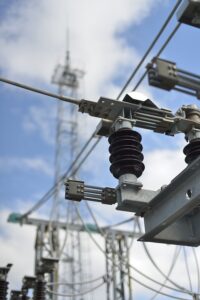Electrical Circuit Isolation Procedure
Electrical isolation is a safety protocol that involves cutting off the electrical supply to a piece of equipment or an entire system. This is done to ensure that the equipment or system is not accidentally energized, which could lead to electrical shock or other hazards. Isolation is achieved by opening an isolator, but before doing so, it’s necessary to follow the procedure to do so.

The Procedure
The electrical isolation procedure typically involves the following steps:
- Identification: Identify all energy sources connected to the equipment. This could include the main power supply, backup generators, or even stored energy in capacitors.
- Isolation: Disconnect the equipment from all identified energy sources. This is usually done by opening an isolator, ensuring that the circuit breaker is open before doing so. Check the breaker indication is in OFF position and ensure the Ammeter value is zero and no current is flowing through the circuit. An isolator device should not be operated under load.
- Lockout/Tagout: Apply lockout devices to the isolation points and attach a tag indicating that the equipment is isolated. The lockout devices are typically keyed locks, and the keys should be controlled by the person performing the work.
- Verification: Verify that the equipment is properly isolated. This can be done by observing measuring devices like voltmeters or using testing equipment to confirm there is no voltage present.
Proper training is crucial for anyone involved in electrical isolation procedures. It’s crucial for workers to comprehend the hazards linked with electrical energy and the significance of adhering to the isolation procedures accurately. The steps outlined above are general in nature, and the detailed procedures and steps may be dictated by the respective authorities. Therefore, it’s imperative to strictly abide by the guidelines pertinent to your specific working environments.
Isolation, which is achieved by opening an isolator, does not incorporate earthing and thus, does not constitute a complete procedure for safe working conditions. Additional earthing is necessary for secure operations.
By understanding and correctly implementing this procedure, along with proper earthing, we can create a safer working environment for everyone. Remember, safety should always be the top priority when working with electrical equipment. Always follow the electrical isolation and earthing procedures and never take shortcuts when it comes to safety.